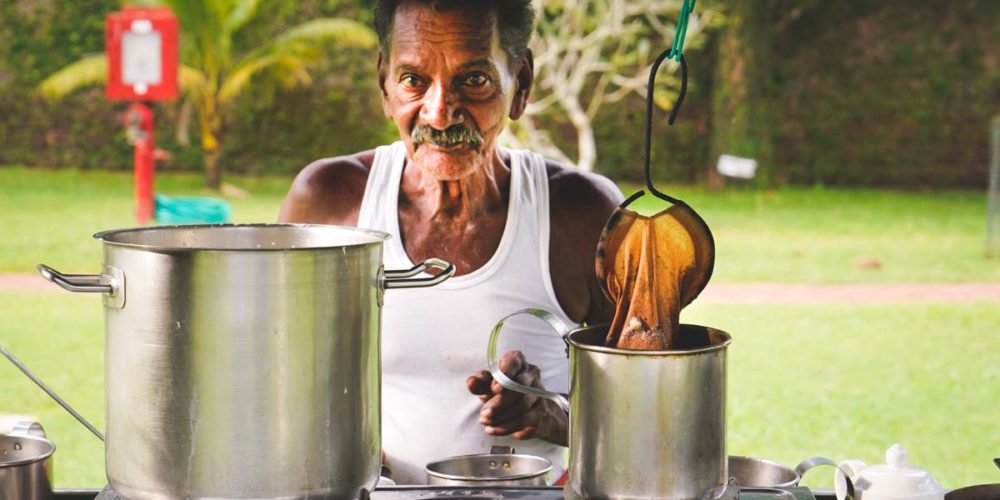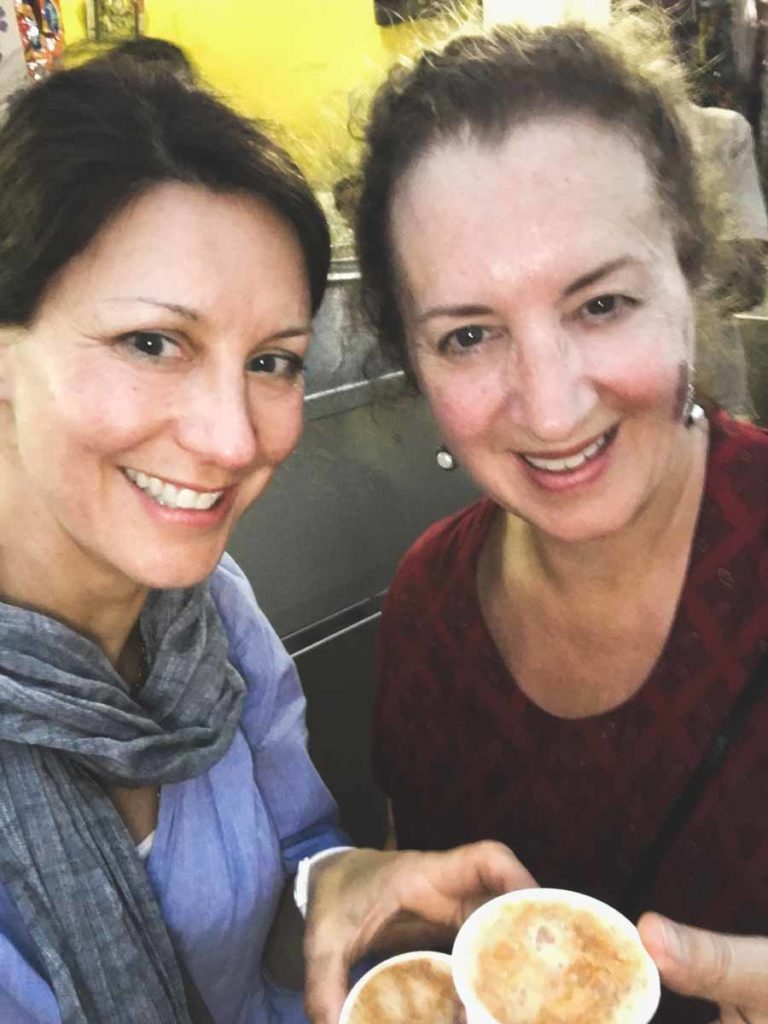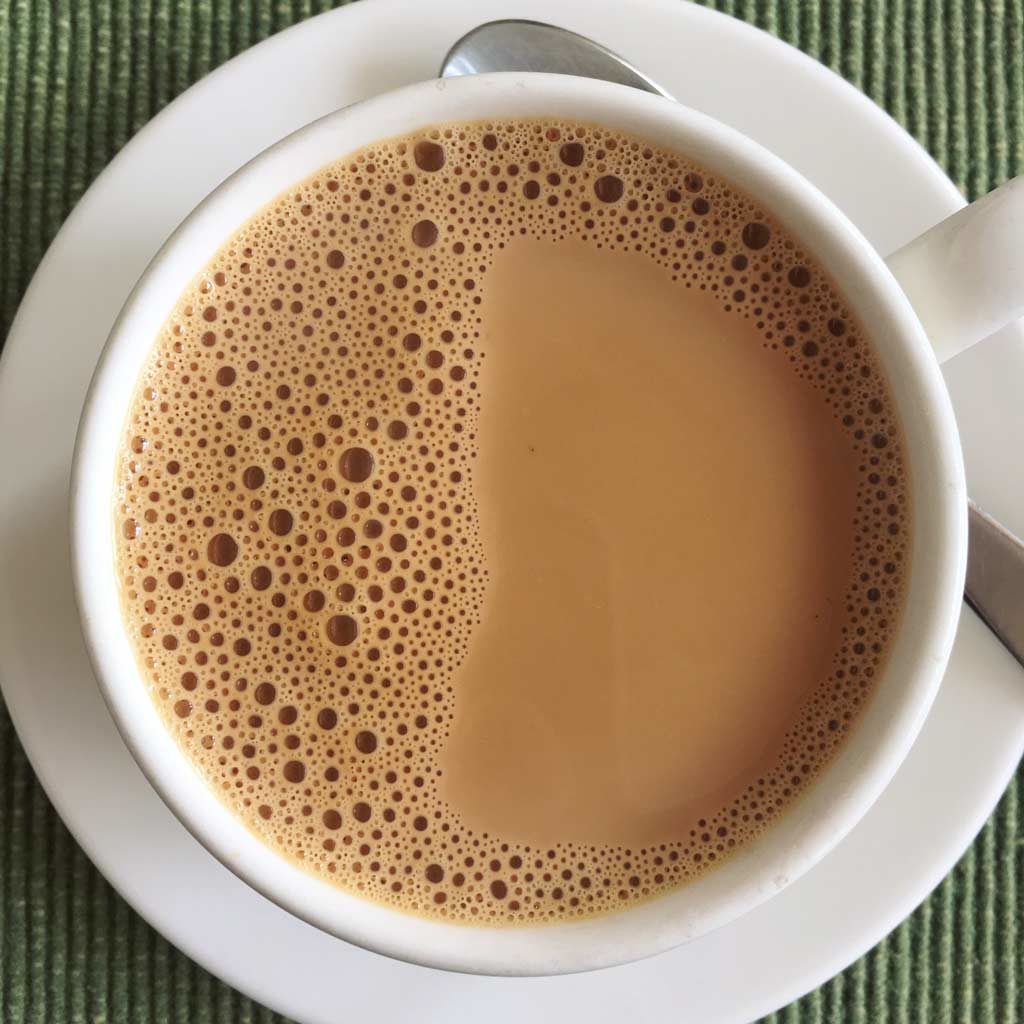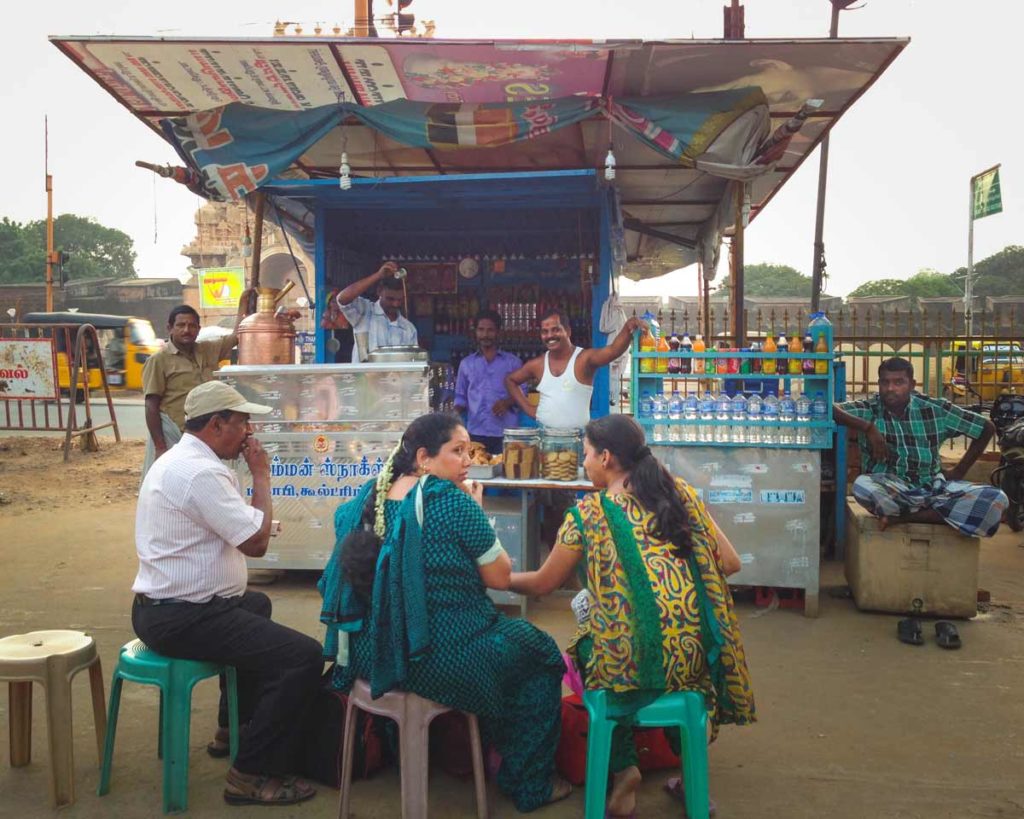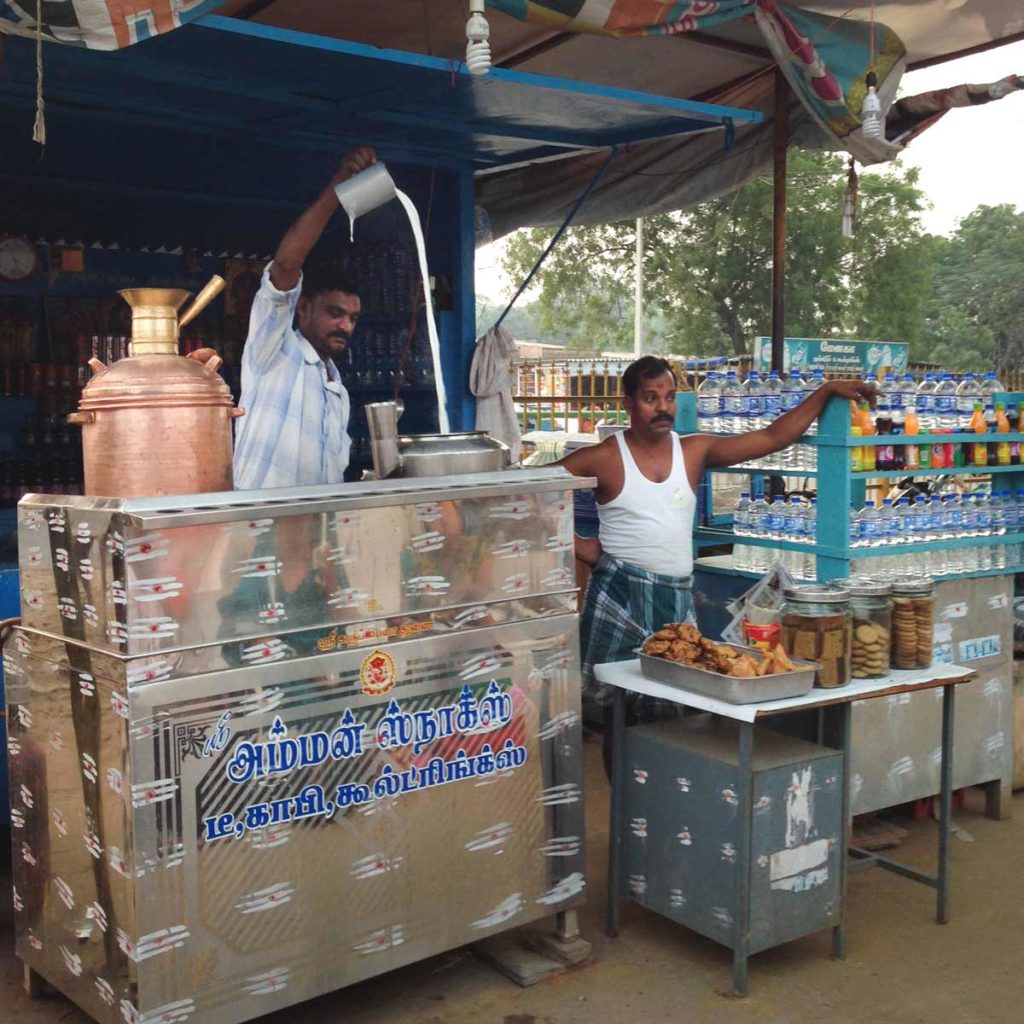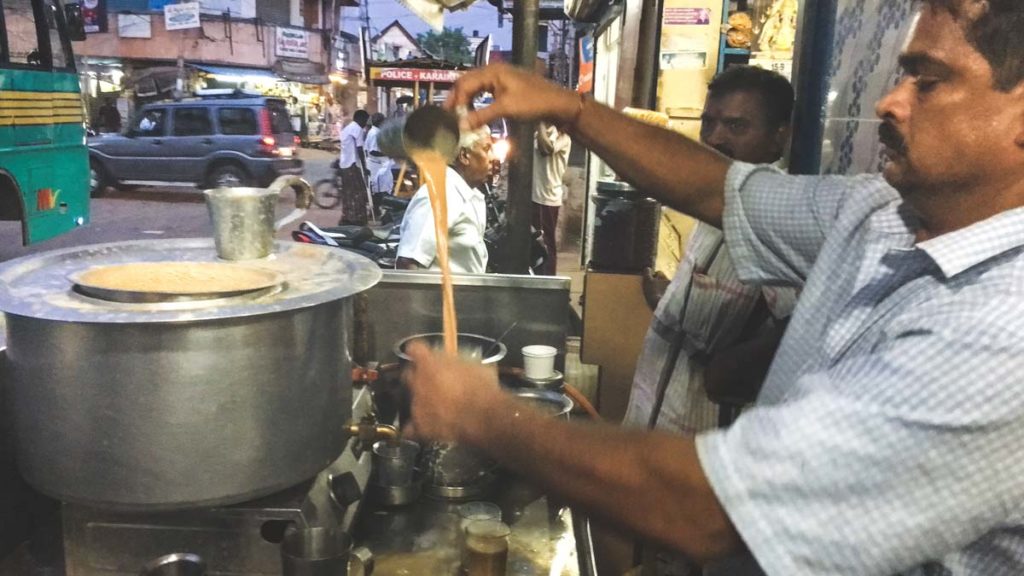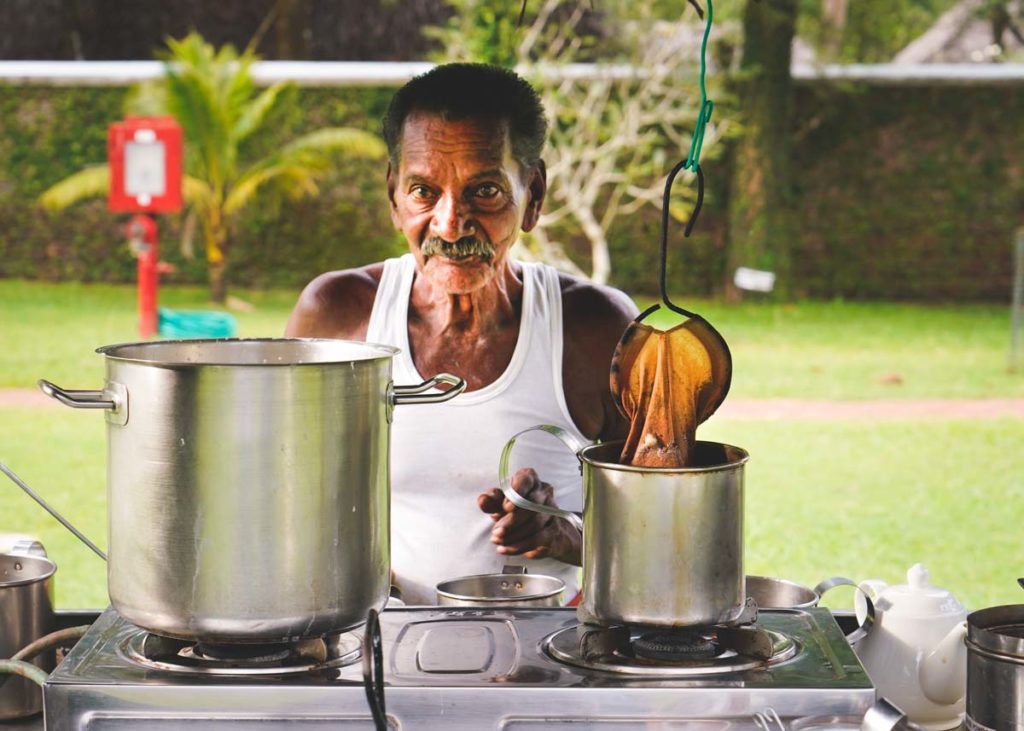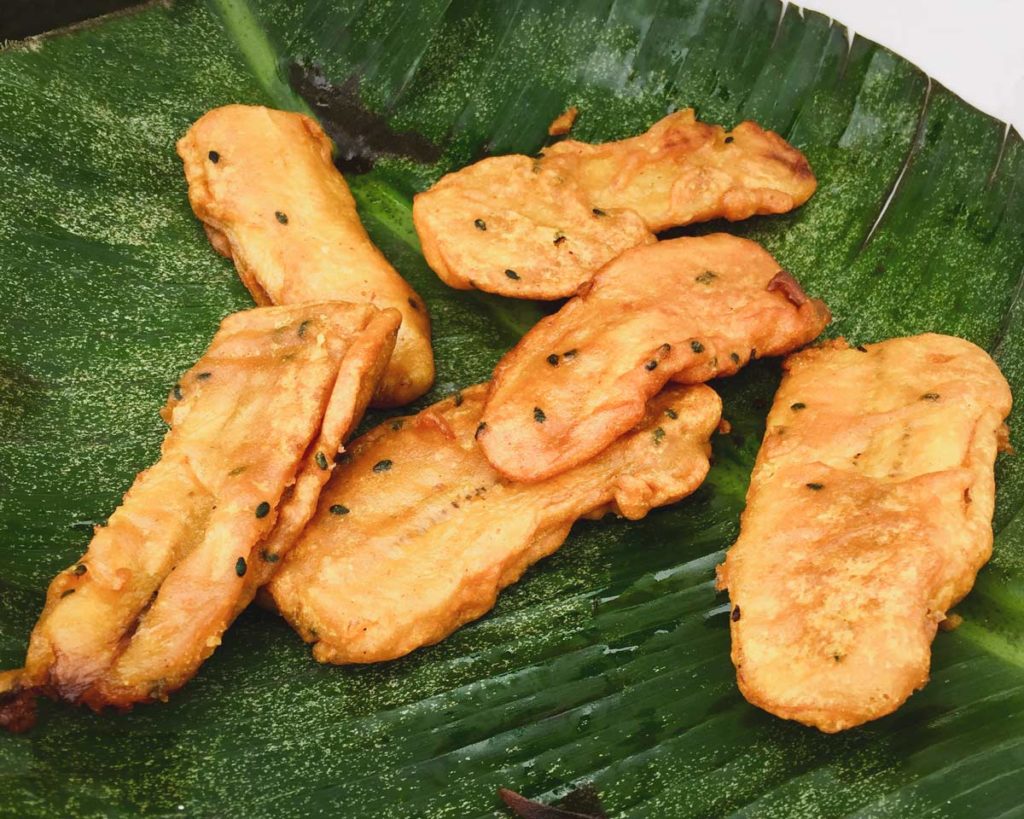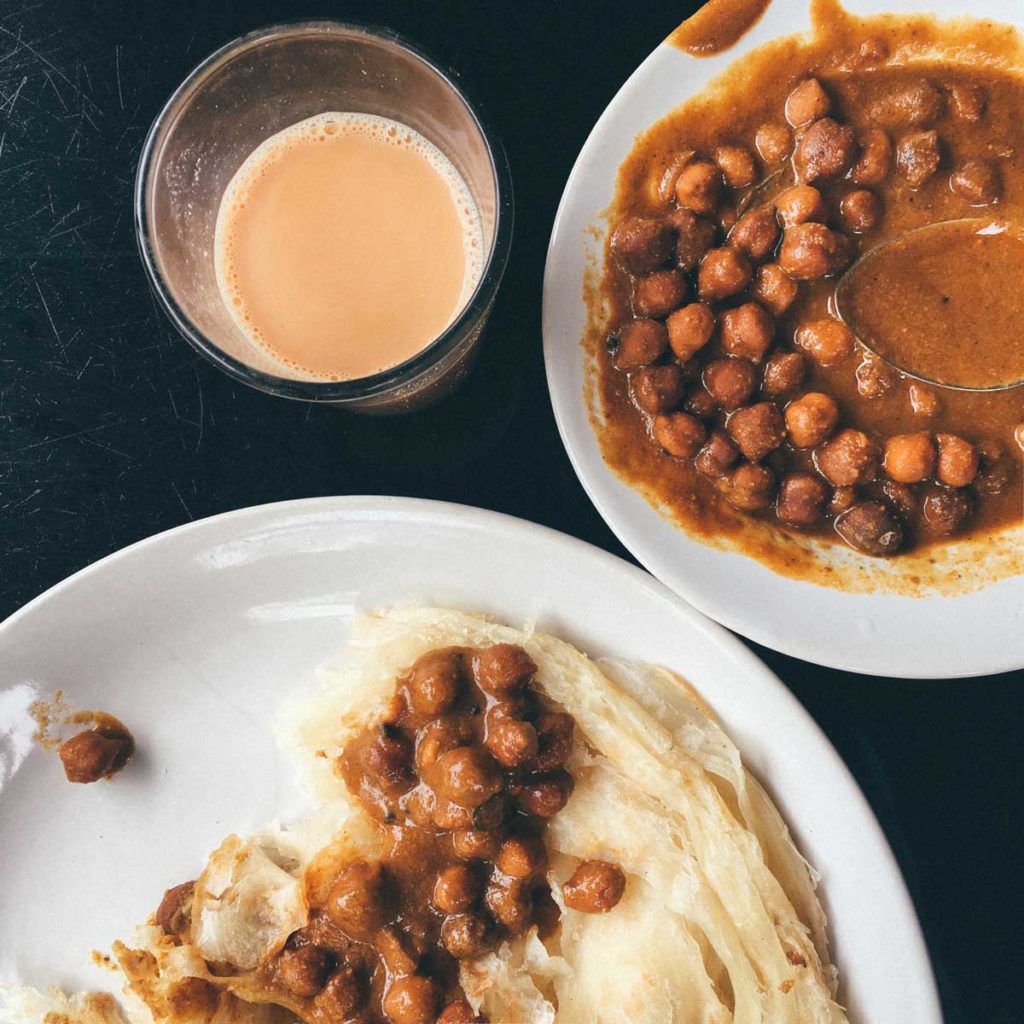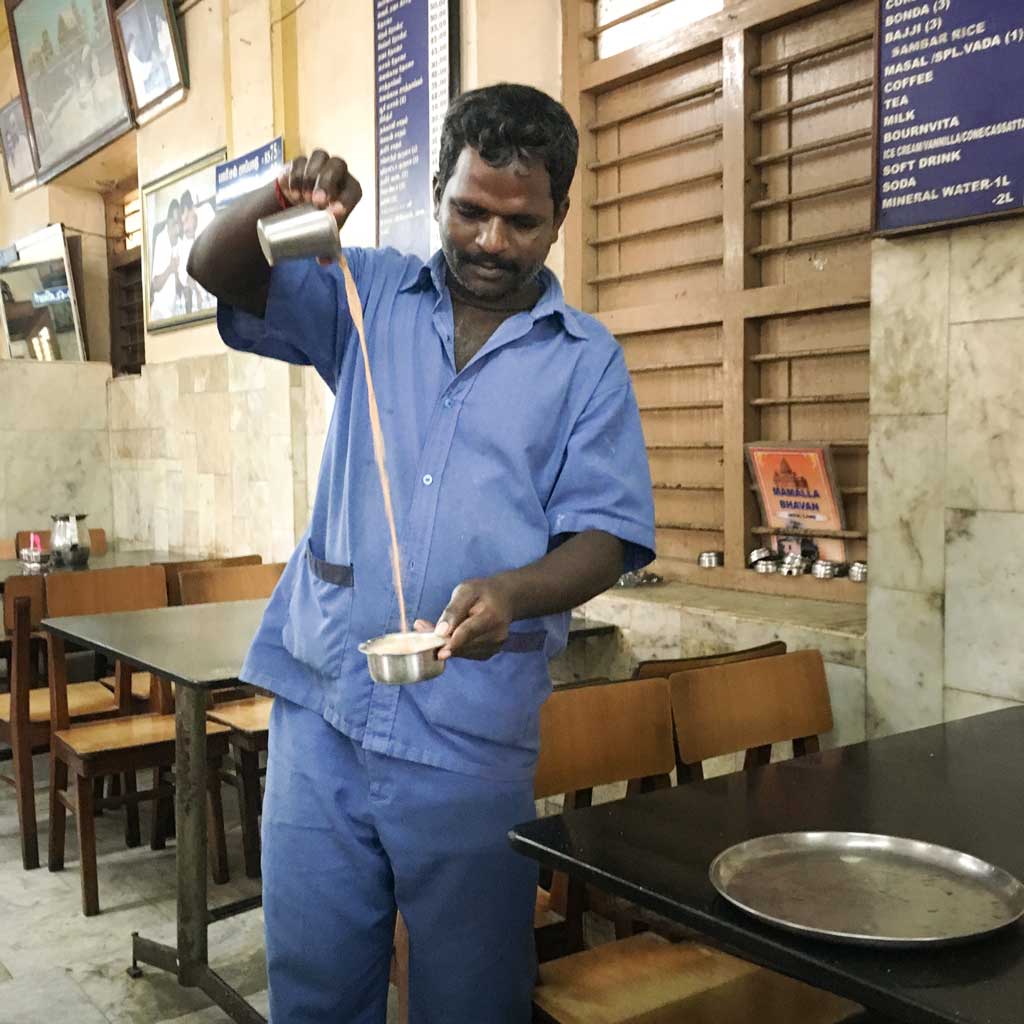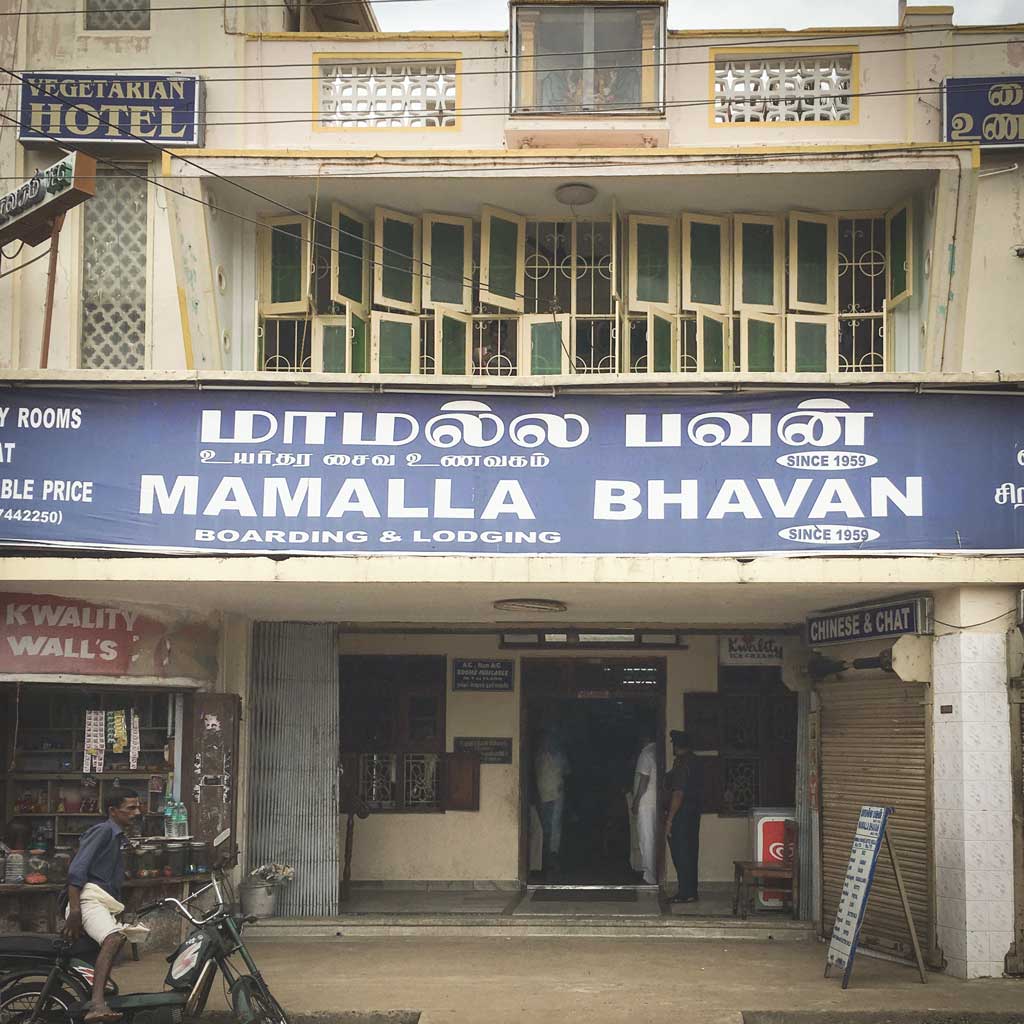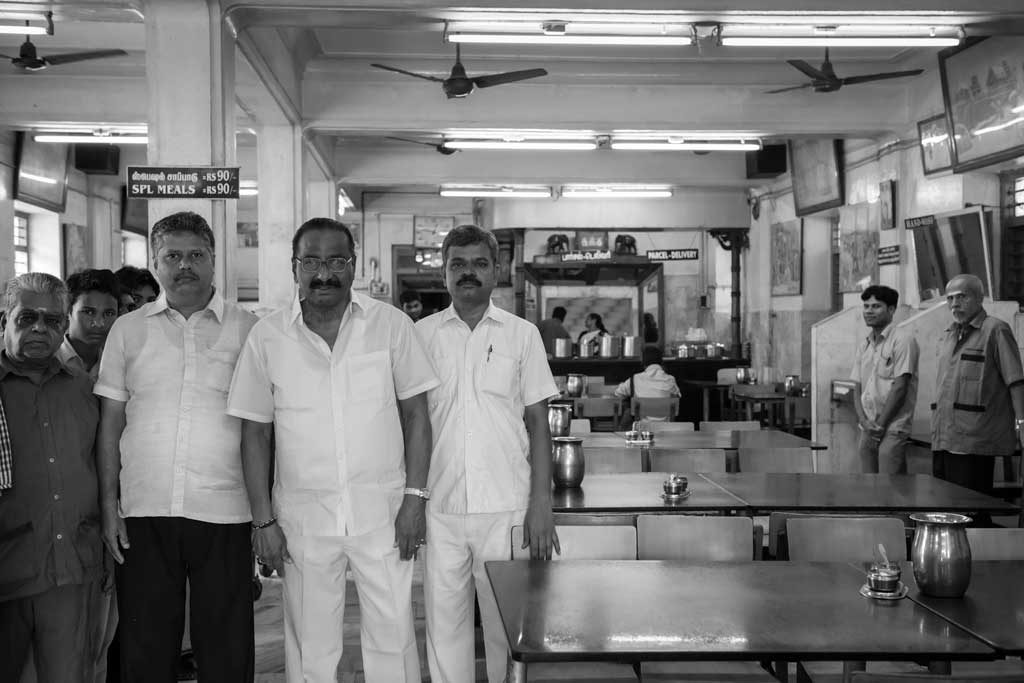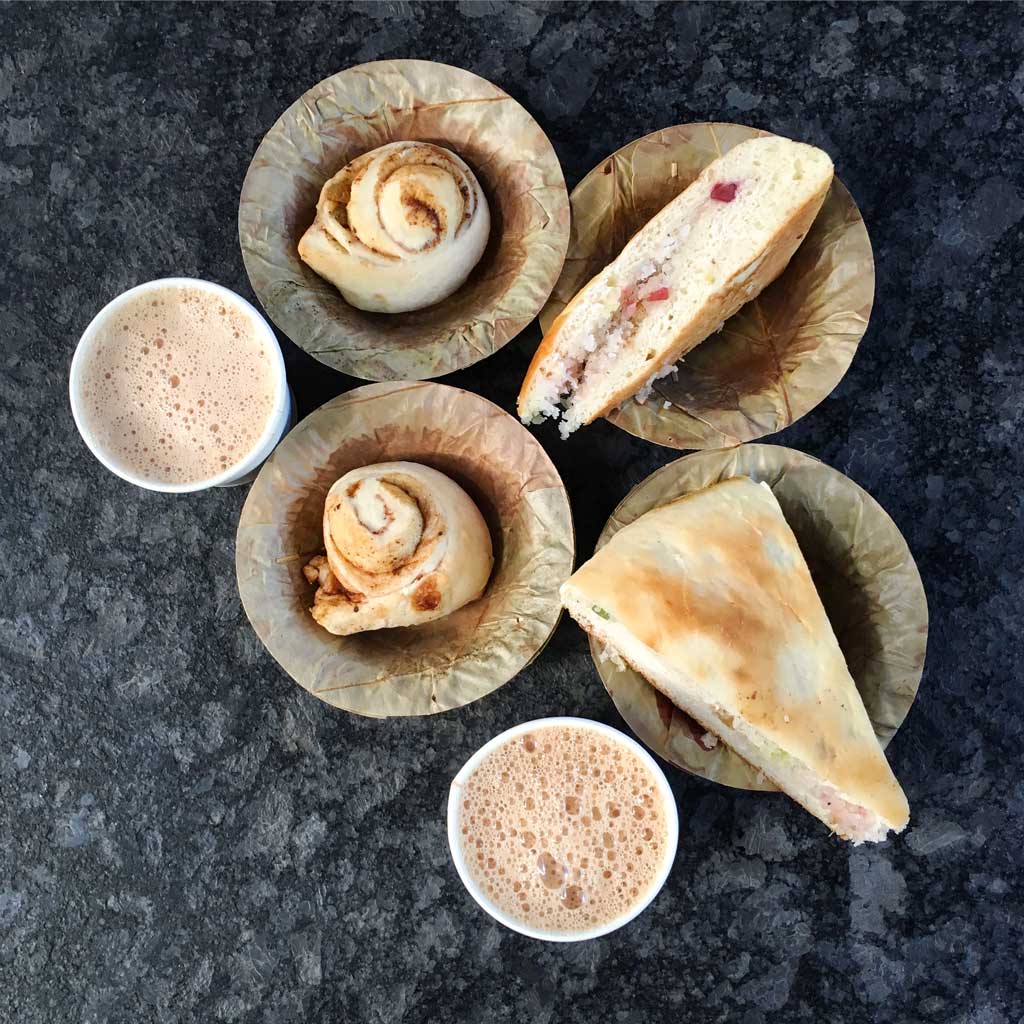Chai and Chai Wallahs – these words are all music to our ears when we travel in South India. Chai wallah translates as tea worker. Whether they have their own stall or are a worker at a restaurant, their job is to make and/or sell chai to their customers. One of the best things about any road trip in South India is making frequent chai stops. Though you might be thinking of your chai latte with extra foam, made from concentrate at Starbucks, the chai we’re talking about is quite different.
So, what is chai?
Chai is tea with milk. Not the British way, where tea is steeped and poured into a cup containing a bit of cold milk. Oh no, chai tea in India is something quite different altogether.
Ordering Chai
There are three main ways to order tea in India. If you like black tea, you order black tea and that is that. If you order chai, you are ordering tea with boiled milk. It will likely come with a healthy dose of jaggery, which is also known as country sugar. It’s a healthy, raw, cane sugar. If you ask for a chai masala, you are ordering tea with that boiled hot milk and a special spice blend. This is where the magic happens.
Chai Masalas
Every chai wallah has their own chai masala. This is a closely guarded secret mixture of freshly roasted spices. There’s usually a blend of cardamom, cinnamon, black pepper, cloves, ginger and/or nutmeg. The spices vary by region. You might see fennel added in the deep South of Tamil Nadu, for instance. But there’s more to making great chai than tea, milk, and spices.
Chai Style
Chai wallah street vendors have an air of efficiency. They are concentrating on timing, gathering ingredients, cleaning cups, boiling, straining, pouring, cooling, planning service, and making change – all from a cart. Some carts are quite grand, others look like they could crumble at any moment.
We found one of our favourite South Indian chai wallahs in the parking lot of the Brihadishvara Temple in Tanjore. His cart was so elaborate it looked like it could double as a merry-go-round.
We managed to sneak in a quick chai on the streets of Karaikudi in Chettinad. It invigorated us after an afternoon rummaging through the town’s alleys of antique dealers. The chai wallah operated on no more than a small desk. His equipment was stainless steel and he seemed to be fretting as he worked. More in tune with the season than us, he had reason to fret for no sooner had we drank our chai, than the sky opened up with the weight of a late-season monsoon. Talk about chai on the run.
CGH Earth’s Marari Beach has one of the nicest chai rituals going. A chai wallah named Sebastian makes a daily visit to the resort. He’s operated his tea trolley in the nearby village for over 50 years. Each afternoon, at tea time, guests gather on the lawn to enjoy the ritual of Sebastian pouring the chai from his full arms-length between two vessels to cool it before serving it. He wears a clean white singlet and a traditional Kerala dhoti and never spills a drop. He positively beams when you tell him you love his chai.
Snacks go well with Chai
At Marari Beach, we enjoyed plump yellow banana fritters spotted with flecks of sesame to mimic a ripening banana. We also enjoyed chana-battered banana fritters sprinkled with sugar with afternoon chai while floating through the Backwaters of Kerala on a houseboat. One can never eat enough banana fritters.
On our way to Periyar, we always stop at Mariya Family Restaurant for their delicious chai. It’s cardamom heavy to stand up to the house specialty of Kadala Curry with piles of Flaky Paratha.
In Mamallapuram, there’s no better, or more affordable, chai than that served at the area’s original hotel, Mamalla Bhavan. If you are lucky, you might even catch the octogenarian owner Jenardhanam at work at the cash register.
At Isha Yoga Center in Coimbatore, you can enjoy chai with Coconut Ginger Buns at the Peppervine Cafe. Or perhaps their Sukku Coffee herbal drink will be more to your liking.
Chai Social
Of course, the really good chai wallahs have a loyal clientele who return daily. Drinking chai is, after all, very social. Whether you are standing at a street stall or waiting in a restaurant, there’s time to look around and chat with people while you wait for the tea to boil, steep and be served.
As chai stalls are natural gathering points, politics is a frequent topic. Prime Minister Modi might be India’s most successful former chai wallah.
During his leadership campaign in 2014, he started an initiative called Chai Pe Charcha (discussions over tea) where he held public forums at chai stalls across the country. He once worked for a short period at an uncle’s chai stall. So, when he wanted to know what was on voter’s minds, this is where he went.
Chai to your Health
In a country where clean water can be difficult to obtain, chai stalls are actually a great public health intervention. This is because all chai must be boiled for a minimum of 10 minutes to produce the creamy texture that is so enjoyable. Meanwhile, all that boiling kills microbes and makes it very safe to drink.
Here’s to your health and we hope you enjoy the upcoming posts with a video montage of chai we’ve enjoyed around South India. And, look for posts with our own Masala Chai and Banana Fritters to follow.

Gratitude
Thanks to the Kerala Travel Mart Society and Travel XS for sponsoring our trip to South India and for their gracious hospitality during our travels throughout Kerala and Tamil Nadu in 2016.
All words and photos are our own. They were not shared with our sponsors prior to publication.

